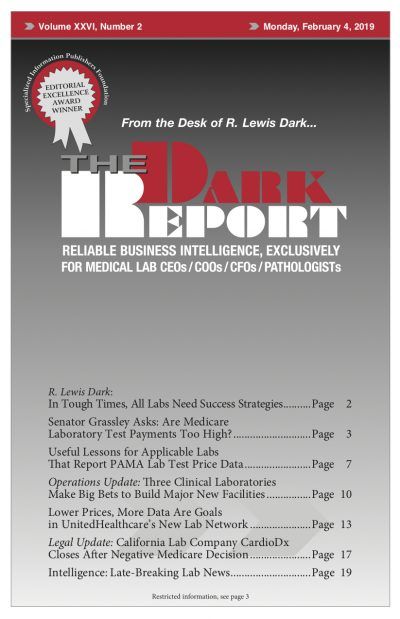CEO SUMMARY: Will clinical labs heed the lessons learned from the first PAMA private payer market price reporting cycle that CMS conducted in 2017? One major difference is that the definition of applicable laboratories now includes most hospital labs. This creates the opportunity for a larger number of clinical labs to submit their price data …
Useful Lessons for Labs That Report PAMA Data Read More »
To access this post, you must purchase The Dark Report.


